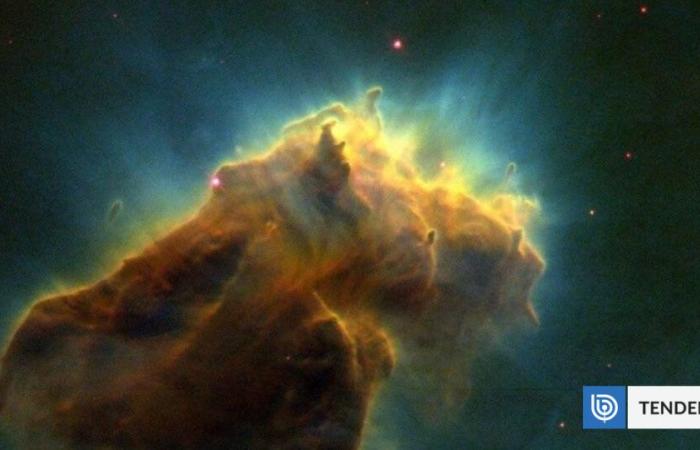Astrophysics of the Rutgers-Nuevo Brunswick University, in New Jersey, United States, They discovered a massive molecular cloud near the sunwhich was invisible for a long time in the observations.
According to Sci News, It is only 300 light years from Eartha “close” distance in astronomical dimensions, and is one of the largest individual structures in the sky and the closest to the solar system ever detected.
What is a molecular cloud?
Molecular clouds They are clouds of gas and dust where stars are formedmostly hydrogen compounds, the most abundant element throughout the universe.
According to NASA, these clouds They are cold “which causes the gas to agglomerate, creating high density bags”. Some of these accumulations can collide or gather even more matter and gravity can cause them to collapse.
However, the measurements of scientists, who published the finding in the magazine Nature Astronomydetermined that this cloud in particular It does not represent a danger to the earth.
Scientists They called it “EOS” and is located exactly on the edge of an area known as local bubblea space cavity full of gas that covers the solar system.
They also estimate that It measures about 40 moons wide and has 3,400 times the mass of the sun“We predict that this cloud will be photoevaporate in 5.7 million years,” says the Paper.
Why did you remain hidden?
These gas structures are usually detected with radio and infrared observations, conventional methods, but Eos had a dark naturebecause what was used a new method to find it.
-“This is the first molecular cloud discovered by direct observation of the distant ultraviolet emission of molecular hydrogen”, Blakesley Burkhart, a Doctor of Astrophysics at Rutgers-Nuevo Brunswick and author of the study.
This means that they could detect their bright hydrogen molecules through their fluorescence in the distant ultravile. “The use of the distant ultraviolet fluorescence emission technique could rewrite our understanding of the interstellar environmentdiscovering hidden clouds throughout the galaxy and even to the farthest limits detectable of cosmic dawn ”, Complete Thavisha Dharmawardena, astronomer from the University of New York that also participated in the research.
*Different views of the molecular cloud “EOS” | Nature Astronomy magazine
This finding, astronomers raise, It is a unique opportunity to study the molecular clouds, the formation of stars and the planets That then orbit them.
“When we look through our telescopes, we capture entire solar systems in the process of training, but We do not know in detail how that happens“Burkhart points out.
“Our discovery of EOS is exciting because Now we can directly measure how molecular clouds are formed and dissociatedand how a galaxy begins to transform gas and dust interstellar into stars and planets, ”he concludes.
Reference:
Burkhart, B. and other authors. A close dark molecular cloud in the local bubble is revealed by H2 fluorescence. Nature Astronomy Journal (2025).






